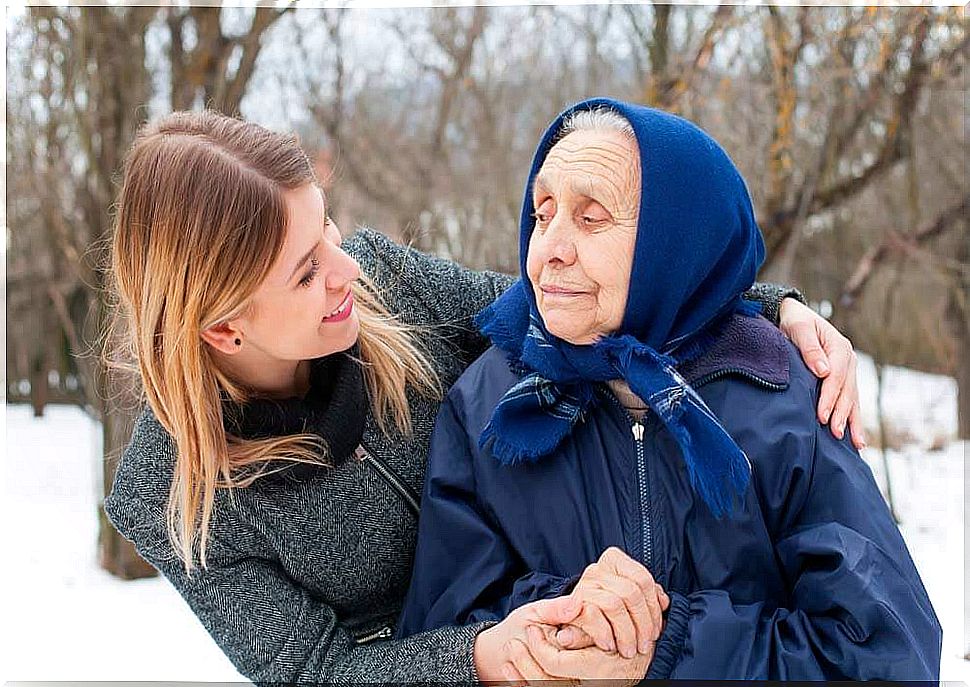Respite Care: What Is It And What To Watch Out For?
Respite care consists of providing temporary assistance to an elderly adult, child or any patient, with the aim that their usual caregiver can have a break. This service is required because serving a person implies a high demand on a physical and mental level.
For this reason, it is recommended that those in charge of this work have the assistance of secondary personnel to replace them for short periods of time. It is worth mentioning that this service is provided in different contexts, such as the home, a care center or a hospital.
With regard to prices, they vary according to dynamics. In this sense, the cost of respite services is usually charged by the hour or by the number of days or weeks required. So that you know the subject in depth, we share all the information.
Importance of respite in caregivers
Caring for any type of person is a task that takes not only time, but also demands on the body and mind from the person in charge. Consequently, if breaks are not taken, negative effects are caused that worsen as the days go by.
In addition to consuming the health of the main caregiver, the well-being of the elderly, the child or the patient is put at risk. For this reason, it is essential to have the incorporation of relief personnel.
Some factors that serve to identify when it is time to have assistance are the following:
- Constant tiredness
- Irritability and impatience.
- Anxiety with insomnia.
- Loss of interest in activities that served as a source of recreation.
- Depression, constant worry and sadness.
Types of respite care
Respite care can take many forms, but it is divided into two main branches. On the one hand, there are relief services in the home, and on the other, those that are carried out outside the home. We explain each one in depth below.
Respite care at home
This type is provided through volunteers or paid help from home. Regarding the frequency, it will depend on each particular case.
The positive here is that it allows the person to stay within their environment, that is, in their own home. From there he continues to receive the attention he requires.
Some examples of respite individuals are available volunteers from organizations, trained staff from home care companies, personal care providers, homemaker services, or healthcare.
In addition to this, you should know that inside the house you can have the assistance of several people at the same time. Such is the case of hiring a specialized medical staff in conjunction with a housewife service for meal preparation.

Respite care outside the home
On the other hand, there are private respite programs through which assistance is also offered to childcare personnel, the elderly or any type of patient.
These may include adult day care centers. These establishments are designed and focused on seniors who do not have the ability to manage independently. It also applies to those who are isolated or demand help.
There are planned activities that promote wellness. As the name implies, they are day care centers that operate during the day and, generally, Monday through Friday. They also offer meals adapted to the needs of each elderly person.
Added to that are residential programs. These offer temporary care for varying lengths of time. Some examples are group homes, hospitals, nursing homes, and other specialized facilities.
Planned night and emergency services are provided there. In this way, caregivers enjoy relief for a reasonable period of time.
As additional information, there are regions where there are retreats for caregivers and relief camps. Here relief is combined with education and peer support.
What should be considered in a respite service?
According to the Caregiving in the US report from the Institute for Public Policy and the National Alliance for Caregiving , 2 out of 5 family caregivers consider their task an emotional burden. In addition, 1 in 5 mentions that they have a high level of physical tension.
For this and many other reasons, respite care is important to help those who always care for the elderly, children or patients with conditions that require almost constant presence.
This work is feasible in the short term, but if it is extended and a break is not provided, negative symptoms develop, such as exhaustion and even depression.
Design a plan
The first step to consider in these scenarios is to design a family plan that is adapted not only to the needs of the patient, but also to what the caregiver may require. Once that is done, think about who is available to help.
In summary, the following questions must be answered:
- What does the main caregiver need ?: It is necessary to study the rest times, the days off, the entry and exit times.
- What does the patient, elder or child require ?: care, meals, house cleaning, laundry, toilet, assistance with medical tasks. A good recommendation is to make a list of needs from highest to lowest.
- Who can replace the main caregiver ?: design a list of people who will replace the main caregiver when they require rest. This may include other family members, private respite services, and institutions.
Organize a meeting with the family
Once you have a clear overview of the needs of each one, it is time to organize a meeting with all the members of the nucleus. It should explain the requirements of the caregiver, the patient and the auxiliary personnel.
Some elements that are helpful for the family reunion to be successful are the following:
- Be specific: you have to be clear about all the points to be discussed.
- Flexibility: the ideal is to offer different options and thus choose the one that suits everyone.
- Answer questions: Many unknowns may arise during the meeting. For this reason, we recommend that you ask the different members of the family about what worries them regarding the issue and find solutions.
- Establish a schedule: organization is always the best way to carry out any procedure. In these cases, they can take advantage of a calendar that indicates which day will be the respite caregiver and the rest times.
Select external respite services
As we have already explained, respite care is an activity that carries a great burden of responsibility. Even for patients with delicate health conditions, it is best to have trained staff.
In such cases, hiring the services of local or national paid or non-profit organizations is essential. If you don’t know where to start your search, we suggest you check local associations such as the National Association of Area Agencies on Aging in the case of the United States.
They can also tell you about free or discounted respite programs. In addition, many times government plans or other institutions provide financial assistance for those who need it.

Make the decision to care for everyone
If you are a relative of a person who requires constant caregiver, you must make the decision to facilitate the respite. Organize a meeting with those involved and assess the possibilities available.
The plan should focus on everyone’s health. The patient, child or elderly care, the one who provides the service and the family members. Work as a team to reach a successful conclusion.









